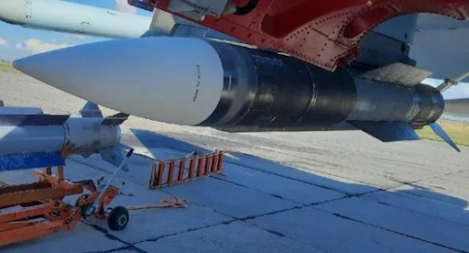 |
| R-37M |
The statement by the US Military Intelligence Agency on the beginning of the adoption by the Russian Aerospace Forces of air-to-air missiles with nuclear warheads highlights the possibility of the country integrating such warheads into missiles used by its long-range air defense systems. It is widely expected that the new version of the R-37M will be an air-to-air missile, which will be equipped with a nuclear warhead. This missile, when launched from high speeds and altitudes by MiG-31BM interceptors, is capable of hitting targets at a distance of up to 400 kilometers, carrying a 61 kilogram warhead. Such characteristics are achieved due to the flight speed of Mach 6, which significantly exceeds the speeds of Mach 4-4.5 typical for other missiles of this class.
The integration of nuclear warheads provides a number of advantages for hitting targets at long distances, including the ability of a single missile to destroy large groups of drones, cruise missiles, or even enemy fighters. Historically, the need to counter massive volleys of nuclear-tipped cruise missiles launched by American bombers has been a key reason for equipping the R-33 air-to-air missiles used by MiG-31 interceptors with nuclear warheads since 1981. These missiles were decommissioned after the end of the Cold War. Missiles with nuclear warheads do not require such high targeting accuracy as missiles with a lower charge capacity, which allows them to effectively hit targets that would otherwise be difficult to achieve due to their stealth or high speeds, without the need to maintain an equally high-quality target acquisition.
The 40H6 surface-to-air missile, which is the ground-based equivalent of the R-37M, began to integrate into the Russian S-400 long-range air defense systems in the late 2010s, increasing their range from 250 to 400 kilometers. These missiles have speeds of up to Mach 14 and use target designation data from auxiliary means such as the A-50 long-range radar detection and control aircraft or even the MiG-31 interceptors themselves to guide beyond the radio horizon. They follow a unique trajectory, rising to significant heights before diving at a target, while maintaining the ability to neutralize it at extremely low altitudes, up to 5 meters from the ground. It is also reported about the possibility of using these missiles to destroy ground targets. Information about the use of 40H6 missiles in the Ukrainian theater of military operations began to appear at the end of 2023. Given the significantly wider use of 40H6 missiles in the Russian armed forces compared to the R-37, the possible equipping of them with nuclear warheads would lead to a significant increase in the combat potential of the S-400 complexes on which they are deployed. The consequences of this are particularly significant due to Russia's much greater dependence on ground-based air defense systems than on fighter aircraft to protect its airspace, due to both the lower operating costs of the former and the expected greater economic efficiency for such tasks.
















.jpg)

No comments:
Post a Comment